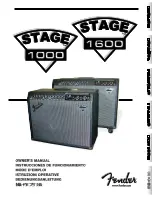
3.
TECHNICAL DESCRIPTION
The BDA-1819-60 bi-directional amplifier provides signal amplification in two separate
frequency bands in both directions between two coaxial connector terminals. It is achieved
by utilization of two frequency selective duplexers, which direct signals at two frequency
bands present at the common port in two outputs. These duplexers provide sufficiently
high isolation between two paths to prevent self-oscillation of the system. Detailed block-
diagram is shown in Figure 1.
The amplifier consists from several gain stages with the low noise stage at the input and
medium power stage at the output. All amplifier stages operate at class A linear regime in
order to provide the lowest possible intermodulation products.
The duplexer serves two purposes: it splits the signal from the common port to two
different ports, and it provides frequency selectivity and isolation between two paths. The
common port of the first duplexer is called “
BASE STATION
”. The common port of the
other duplexer is called “
SERVICE AREA
”.
Only signals within the frequency range of 851-866 MHz band will be amplified coming
from the
BASE STATION
port and only signals within the frequency range of 806-821
MHz band will be amplified from the
SERVICE AREA
port.
In this configuration the BDA amplifies signals in the Up-link band in one direction and
signals in the Down-link band in the other direction.
Physically the BDA block consists of a single compact unit with two RF connectors. It is
rugged and can be easily connected during cable installation. It has a moisture proof
NEMA 4X enclosure suitable for indoor and outdoor installation with two low noise
medium power amplifiers, optional independently controlled Up-link and Down-link
attenuators, two duplexers, and optional bias tee’s.
The BDA can be powered by a conventional 110/220 VAC source using a built-in power
supply or alternatively DC voltage can be supplied to the BDA via an external DC input
or via center conductor of the RF coax cable.



























